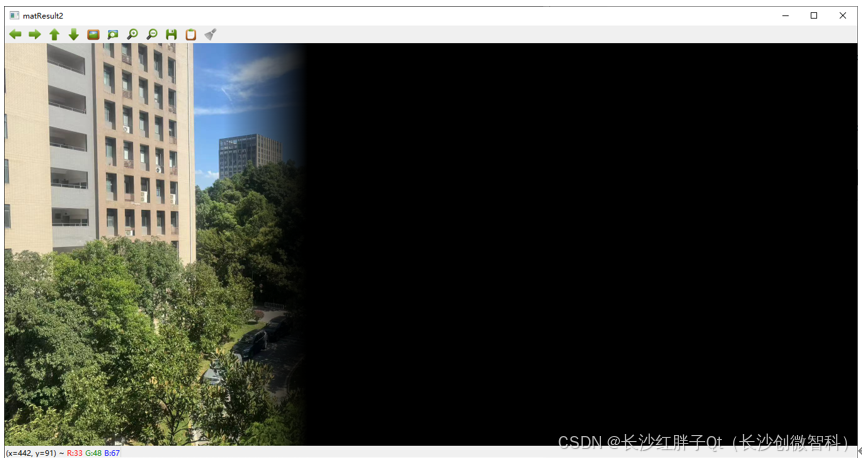前言
对于图像拼接,前面探讨了通过基于Stitcher进行拼接过渡和基于特征点进行拼接过渡,这2个过渡的方式是摄像头拍摄角度和方向不应差距太大。
对于特定的场景,本身摄像头拍摄角度差距较大,拉伸变换后也难做到完美的缝隙拼接,这个时候使用渐近过渡反倒是最好的。
Demo
单独蒙版
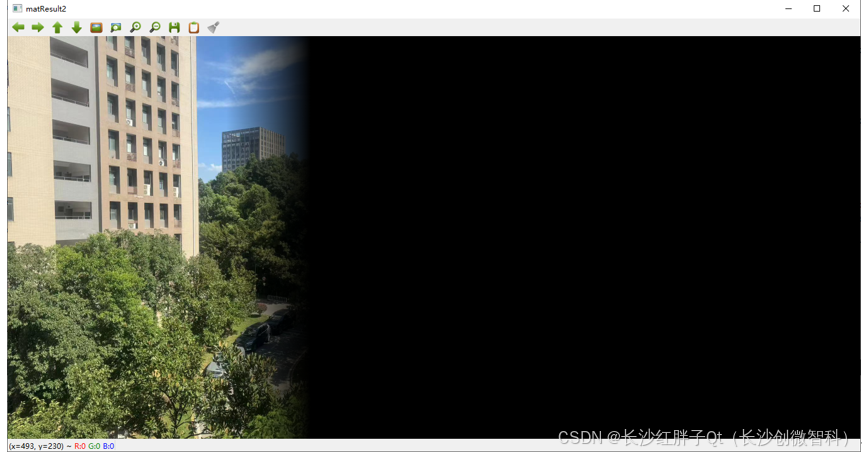
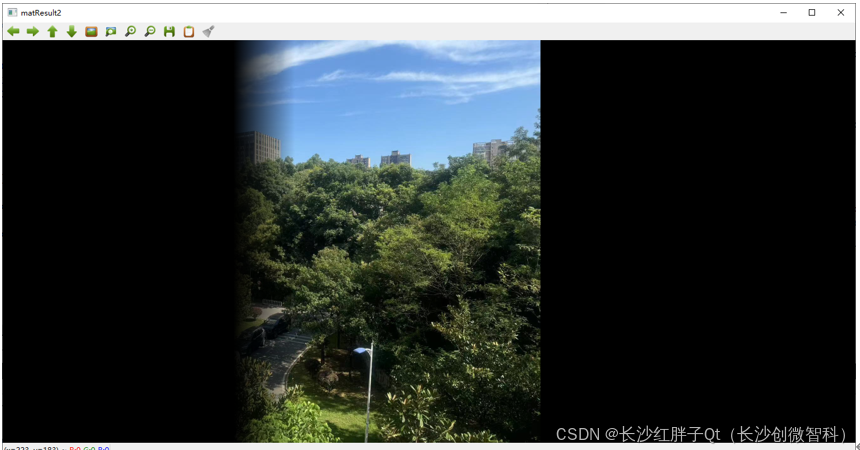
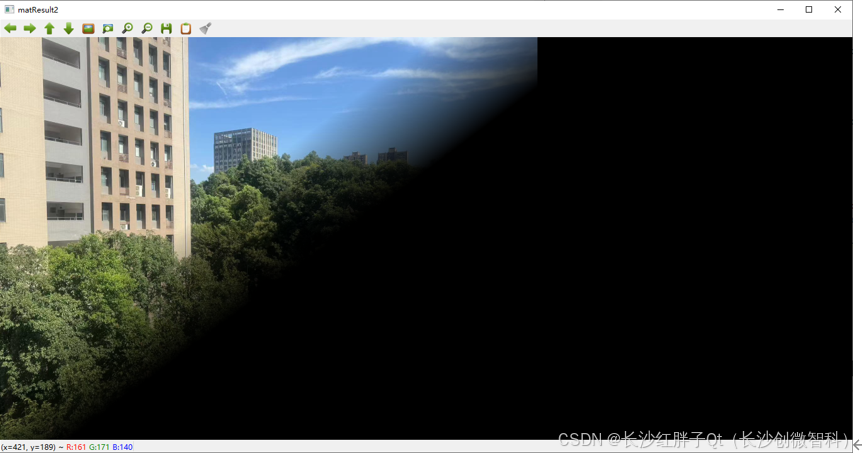
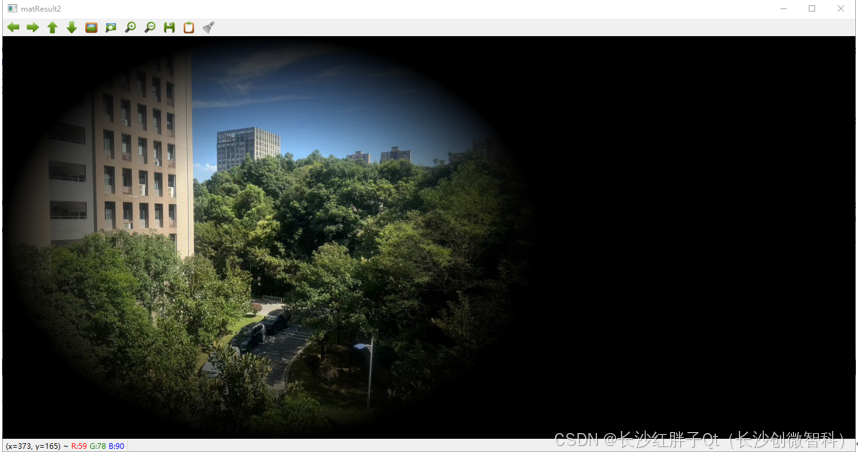
蒙版过渡,这里只是根据图来,其实可对每个像素对于第一张图为系数k,而第二张为255-k,实现渐近过渡。
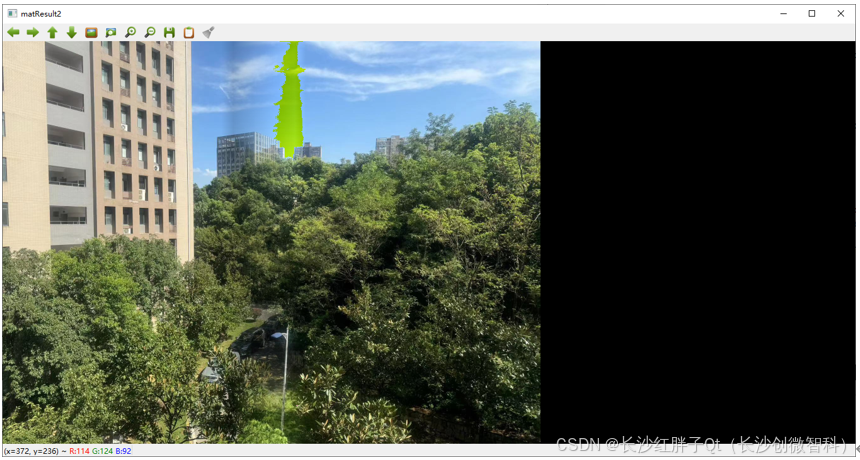
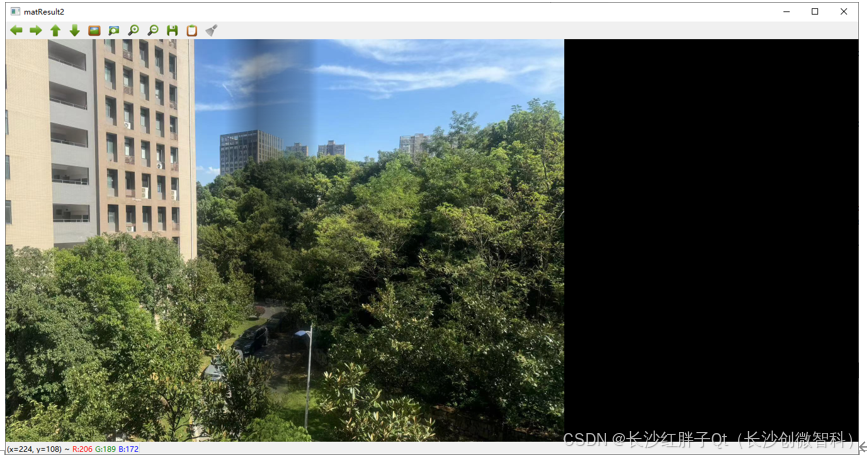
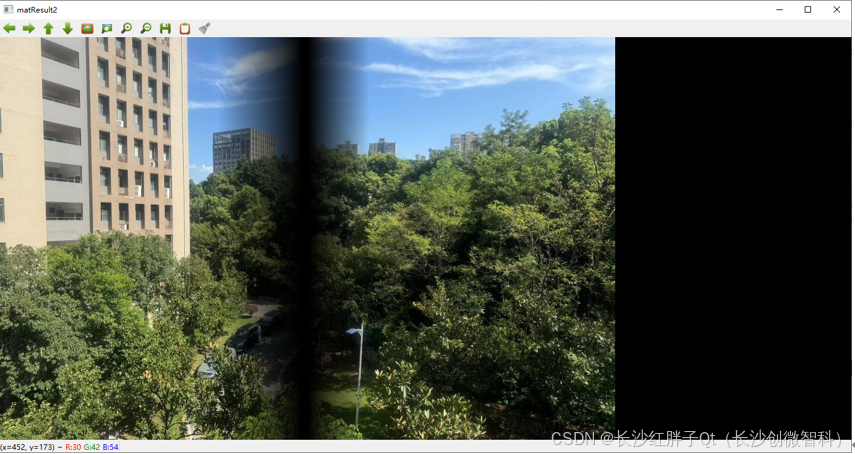
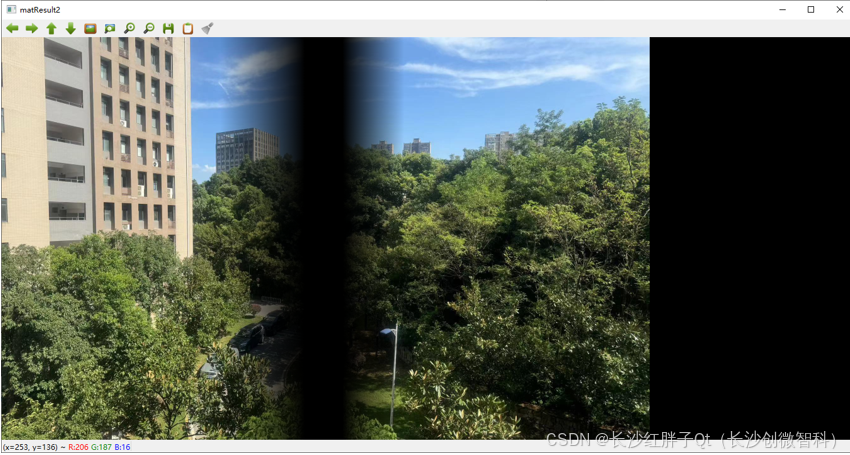
直接使用第一张蒙版优化
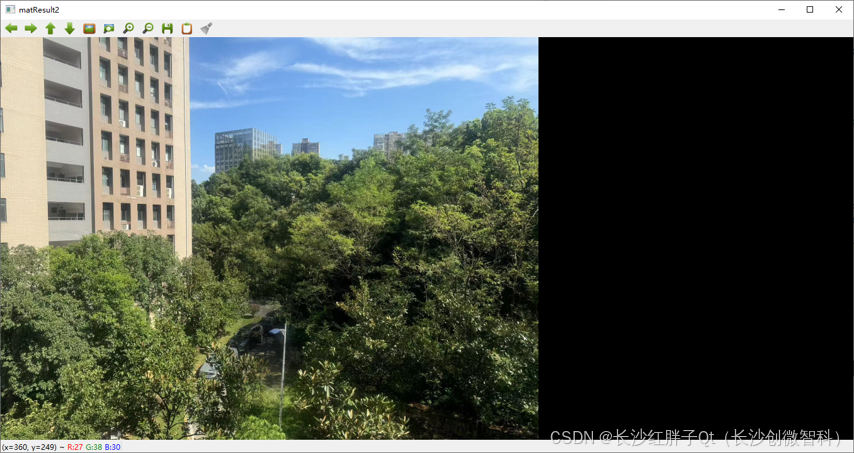
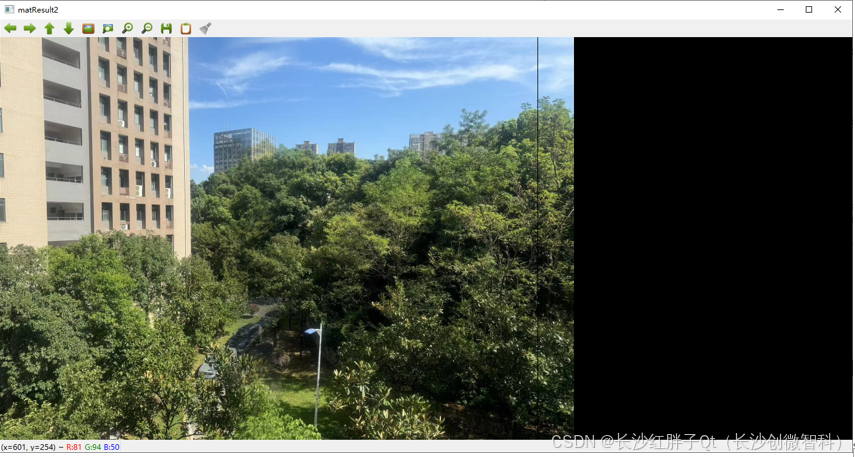
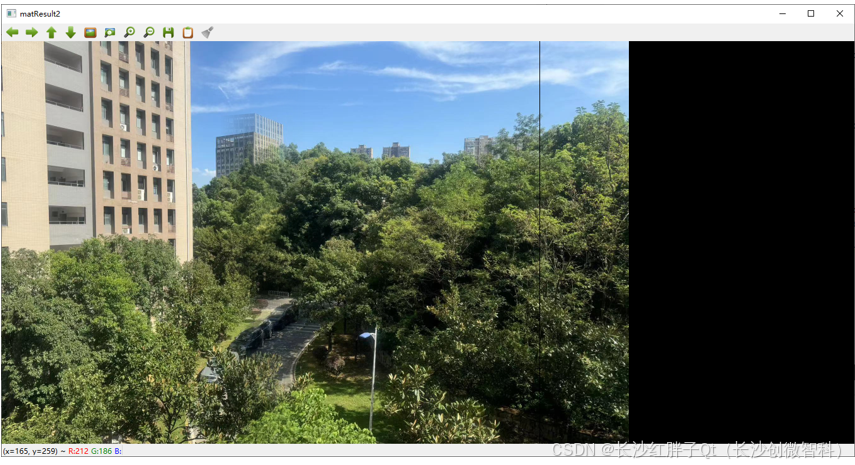
准本蒙版
蒙版可以混合,也可以分开,为了让读者更好的深入理解原理,这里都使用:
找个工具,造单色渐进色,红色蒙版,只是r通道,bga都为0
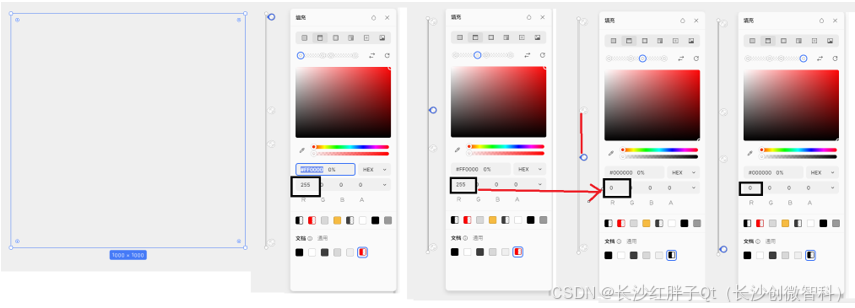
(注意:使用rgba四通道)
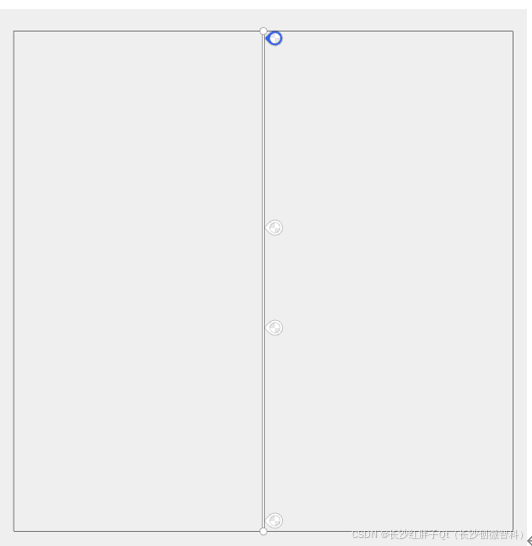
(上面这张图,加了边框,导致了"入坑二"打印像素值不对)
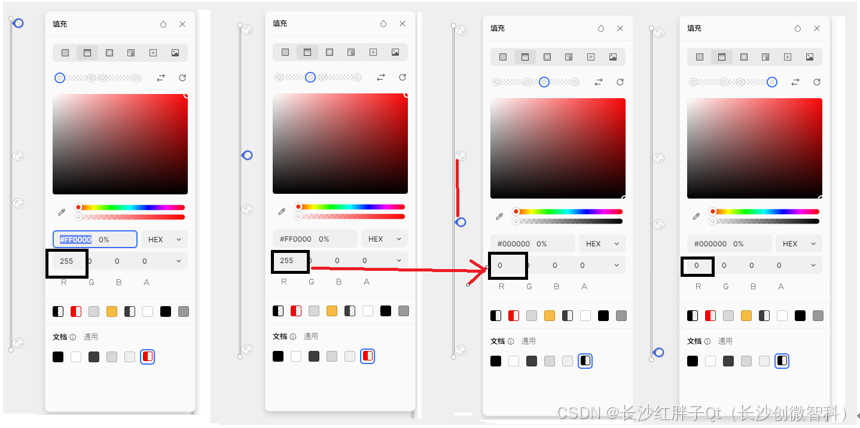
由于工具渐进色无法叠层,这个工具无法实现rgba不同向渐进色再一张图(横向、纵向、斜向),更改了方式,每个使用一张图:
为了方便,不管a通道了,直接a为100%(255)。

再弄另外一个通道的:
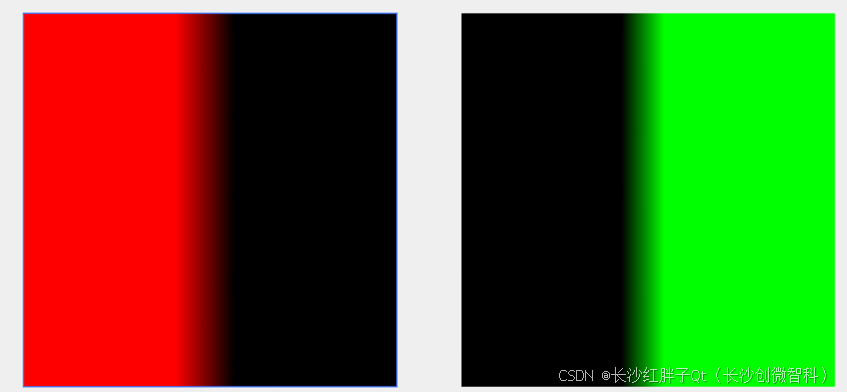
在这里使用工具就只能单独一张了:
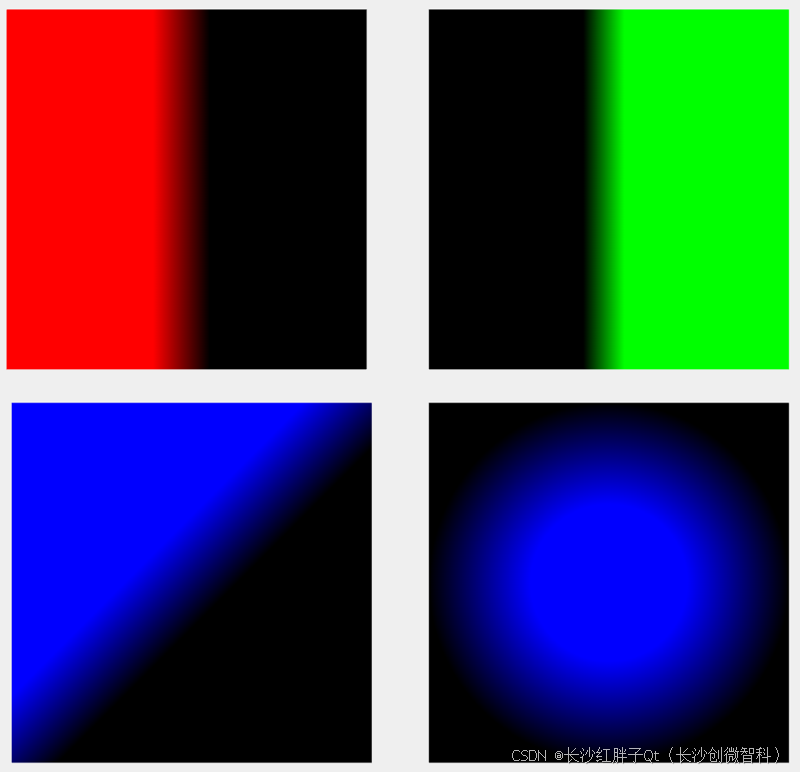
一个蒙版图的过渡实例
步骤一:打开图片和蒙版

cpp
cv::Mat matLeft = cv::imread("D:/qtProject/openCVDemo/openCVDemo/modules/openCVManager/images/29.jpg"); cv::Mat matRight = cv::imread("D:/qtProject/openCVDemo/openCVDemo/modules/openCVManager/images/30.jpg"); cv::Mat matMask1 = cv::imread("D:/qtProject/openCVDemo/openCVDemo/modules/openCVManager/images/37.png", cv::IMREAD_UNCHANGED); cv::Mat matMask2 = cv::imread("D:/qtProject/openCVDemo/openCVDemo/modules/openCVManager/images/38.png", cv::IMREAD_UNCHANGED); cv::Mat matMask3 = cv::imread("D:/qtProject/openCVDemo/openCVDemo/modules/openCVManager/images/39.png", cv::IMREAD_UNCHANGED); cv::Mat matMask4 = cv::imread("D:/qtProject/openCVDemo/openCVDemo/modules/openCVManager/images/40.png", cv::IMREAD_UNCHANGED); 步骤二:将蒙版变成和原图一样大小

cpp
cv::resize(matLeft, matLeft, cv::Size(0, 0), 0.5, 0.5); cv::resize(matRight, matRight, cv::Size(0, 0), 0.5, 0.5); cv::resize(matMask1, matMask1, cv::Size(matLeft.cols, matLeft.rows)); cv::resize(matMask2, matMask2, cv::Size(matLeft.cols, matLeft.rows)); cv::resize(matMask3, matMask3, cv::Size(matLeft.cols, matLeft.rows)); cv::resize(matMask4, matMask4, cv::Size(matLeft.cols, matLeft.rows)); 步骤三:底图
由于两张图虽然是同样大小,但是其不是按照整体拼接后的大小,所以需要假设一个拼接后的大小的底图。

cpp
// 底图,扩大500横向,方便移动
cv::Mat matResult = cv::Mat(matLeft.rows, matLeft.cols + 500, CV_8UC3); 步骤四:原图融合
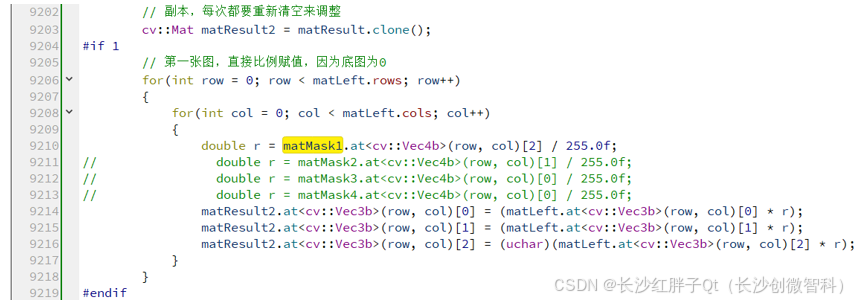
cpp
// 副本,每次都要重新清空来调整
cv::Mat matResult2 = matResult.clone(); #if 1 // 第一张图,直接比例赋值,因为底图为0 for(int row = 0; row < matLeft.rows; row++) { for(int col = 0; col < matLeft.cols; col++) { double r = matMask1.at<cv::Vec4b>(row, col)[2] / 255.0f; // double r = matMask2.at<cv::Vec4b>(row, col)[1] / 255.0f; // double r = matMask3.at<cv::Vec4b>(row, col)[0] / 255.0f; // double r = matMask4.at<cv::Vec4b>(row, col)[0] / 255.0f; matResult2.at<cv::Vec3b>(row, col)[0] = (matLeft.at<cv::Vec3b>(row, col)[0] * r); matResult2.at<cv::Vec3b>(row, col)[1] = (matLeft.at<cv::Vec3b>(row, col)[1] * r); matResult2.at<cv::Vec3b>(row, col)[2] = (uchar)(matLeft.at<cv::Vec3b>(row, col)[2] * r); } } #endif 步骤五:另外一张图的融合

cpp
#if 1 // 第二张图,加法,因为底图为原图了 for(int row = 0; row < matRight.rows; row++) { for(int col = 0; col < matRight.cols; col++) { double g = matMask2.at<cv::Vec4b>(row, col)[1] / 255.0f; // 偏移了x坐标 matResult2.at<cv::Vec3b>(row, col + x)[0] += matRight.at<cv::Vec3b>(row, col)[0] * g; matResult2.at<cv::Vec3b>(row, col + x)[1] += matRight.at<cv::Vec3b>(row, col)[1] * g; matResult2.at<cv::Vec3b>(row, col + x)[2] += matRight.at<cv::Vec3b>(row, col)[2] * g; } } #endif 步骤六(与步骤五互斥):优化的融合
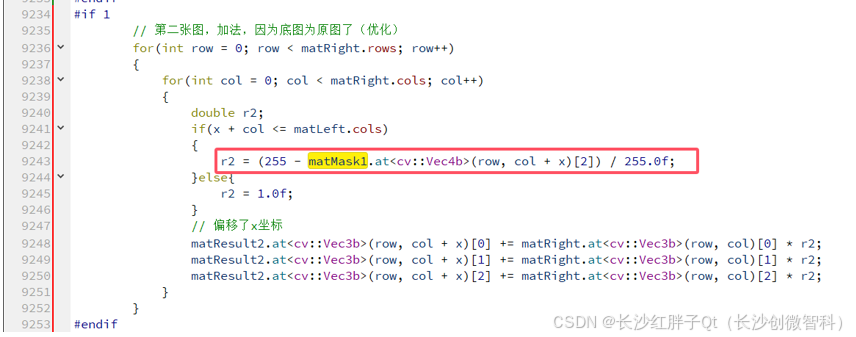
cpp
#if 1 // 第二张图,加法,因为底图为原图了(优化) for(int row = 0; row < matRight.rows; row++) { for(int col = 0; col < matRight.cols; col++) { double r2; if(x + col <= matLeft.cols) { r2 = (255 - matMask1.at<cv::Vec4b>(row, col + x)[2]) / 255.0f; }else{ r2 = 1.0f; } // 偏移了x坐标 matResult2.at<cv::Vec3b>(row, col + x)[0] += matRight.at<cv::Vec3b>(row, col)[0] * r2; matResult2.at<cv::Vec3b>(row, col + x)[1] += matRight.at<cv::Vec3b>(row, col)[1] * r2; matResult2.at<cv::Vec3b>(row, col + x)[2] += matRight.at<cv::Vec3b>(row, col)[2] * r2; } } #endif 函数原型
手码的像素算法,没有什么高级函数。
Demo源码
cpp
void OpenCVManager::testMaskSplicing() { cv::Mat matLeft = cv::imread("D:/qtProject/openCVDemo/openCVDemo/modules/openCVManager/images/29.jpg"); cv::Mat matRight = cv::imread("D:/qtProject/openCVDemo/openCVDemo/modules/openCVManager/images/30.jpg"); cv::Mat matMask1 = cv::imread("D:/qtProject/openCVDemo/openCVDemo/modules/openCVManager/images/37.png", cv::IMREAD_UNCHANGED); cv::Mat matMask2 = cv::imread("D:/qtProject/openCVDemo/openCVDemo/modules/openCVManager/images/38.png", cv::IMREAD_UNCHANGED); cv::Mat matMask3 = cv::imread("D:/qtProject/openCVDemo/openCVDemo/modules/openCVManager/images/39.png", cv::IMREAD_UNCHANGED); cv::Mat matMask4 = cv::imread("D:/qtProject/openCVDemo/openCVDemo/modules/openCVManager/images/40.png", cv::IMREAD_UNCHANGED); #if 0 // 打印通道数和数据类型 // ..\openCVDemo\modules\openCVManager\OpenCVManager.cpp 9166 "2024-10-31 20:07:42:619" 4 24 24 LOG << matMask.channels() << matMask.type() << CV_8UC4; // 4 24 // 打印mask蒙版行像素,隔一定行数打一次 for(int row = 0; row < matMask.rows; row += 10) { for(int col = 100; col < matMask.cols; col++) { int r = matMask.at<cv::Vec4b>(row, col)[2]; int g = matMask.at<cv::Vec4b>(row, col)[1]; int b = matMask.at<cv::Vec4b>(row, col)[0]; int a = matMask.at<cv::Vec4b>(row, col)[3]; LOG << "row:" << row << ", col:" << col << "r(rgba):" << r << g << b << a; break; } } #endif // 图片较大,缩为原来的0.5倍 cv::resize(matLeft, matLeft, cv::Size(0, 0), 0.5, 0.5); cv::resize(matRight, matRight, cv::Size(0, 0), 0.5, 0.5); cv::resize(matMask1, matMask1, cv::Size(matLeft.cols, matLeft.rows)); cv::resize(matMask2, matMask2, cv::Size(matLeft.cols, matLeft.rows)); cv::resize(matMask3, matMask3, cv::Size(matLeft.cols, matLeft.rows)); cv::resize(matMask4, matMask4, cv::Size(matLeft.cols, matLeft.rows)); // 底图,扩大500横向,方便移动 cv::Mat matResult = cv::Mat(matLeft.rows, matLeft.cols + 500, CV_8UC3); // 第一张图 int key = 0; int x = 0; while(true) { // 副本,每次都要重新清空来调整 cv::Mat matResult2 = matResult.clone(); #if 1 // 第一张图,直接比例赋值,因为底图为0 for(int row = 0; row < matLeft.rows; row++) { for(int col = 0; col < matLeft.cols; col++) { double r = matMask1.at<cv::Vec4b>(row, col)[2] / 255.0f; // double r = matMask2.at<cv::Vec4b>(row, col)[1] / 255.0f; // double r = matMask3.at<cv::Vec4b>(row, col)[0] / 255.0f; // double r = matMask4.at<cv::Vec4b>(row, col)[0] / 255.0f; matResult2.at<cv::Vec3b>(row, col)[0] = (matLeft.at<cv::Vec3b>(row, col)[0] * r); matResult2.at<cv::Vec3b>(row, col)[1] = (matLeft.at<cv::Vec3b>(row, col)[1] * r); matResult2.at<cv::Vec3b>(row, col)[2] = (uchar)(matLeft.at<cv::Vec3b>(row, col)[2] * r); } } #endif #if 0 // 第二张图,加法,因为底图为原图了 for(int row = 0; row < matRight.rows; row++) { for(int col = 0; col < matRight.cols; col++) { double g = matMask2.at<cv::Vec4b>(row, col)[1] / 255.0f; // 偏移了x坐标 matResult2.at<cv::Vec3b>(row, col + x)[0] += matRight.at<cv::Vec3b>(row, col)[0] * g; matResult2.at<cv::Vec3b>(row, col + x)[1] += matRight.at<cv::Vec3b>(row, col)[1] * g; matResult2.at<cv::Vec3b>(row, col + x)[2] += matRight.at<cv::Vec3b>(row, col)[2] * g; } } #endif #if 1 // 第二张图,加法,因为底图为原图了(优化) for(int row = 0; row < matRight.rows; row++) { for(int col = 0; col < matRight.cols; col++) { double r2; if(x + col <= matLeft.cols) { r2 = (255 - matMask1.at<cv::Vec4b>(row, col + x)[2]) / 255.0f; }else{ r2 = 1.0f; } // 偏移了x坐标 matResult2.at<cv::Vec3b>(row, col + x)[0] += matRight.at<cv::Vec3b>(row, col)[0] * r2; matResult2.at<cv::Vec3b>(row, col + x)[1] += matRight.at<cv::Vec3b>(row, col)[1] * r2; matResult2.at<cv::Vec3b>(row, col + x)[2] += matRight.at<cv::Vec3b>(row, col)[2] * r2; } } #endif // cv::imshow("matMask1", matMask1); // cv::imshow("matLeft", matLeft); cv::imshow("matResult2", matResult2); key = cv::waitKey(0); if(key == 'a') { x--; if(x < 0) { x = 0; } }else if(key == 'd') { x++; if(x + matRight.cols > matResult2.cols) { x = matResult2.cols - matRight.cols; } }else if(key == 'q') { break; } } } 工程模板v1.72.0

入坑
入坑一:读取通道rgba失败
问题:读取通道rgba失败
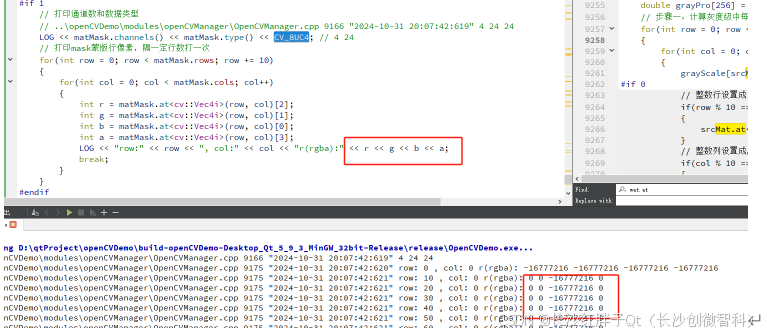
原因
是uchar,转换成byte,而不是int
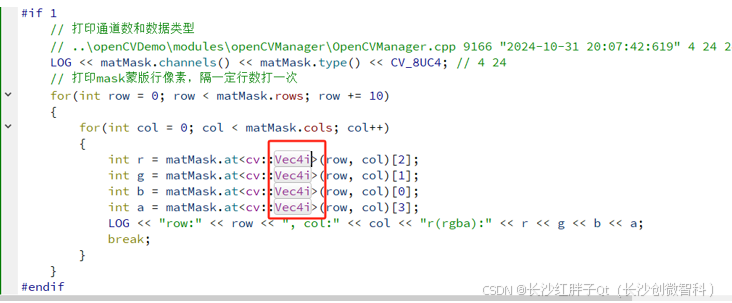
解决
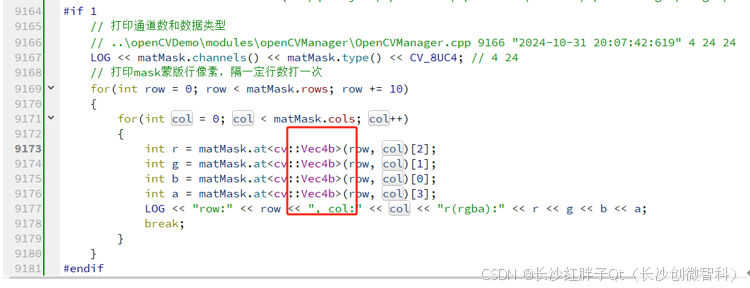
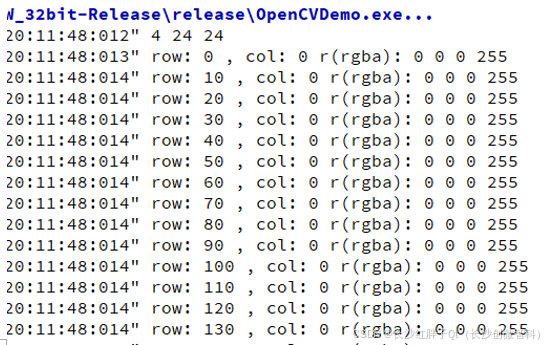
入坑二:读取通道一直是0,0,0,255
问题
读取通道一直是0,0,0,255。
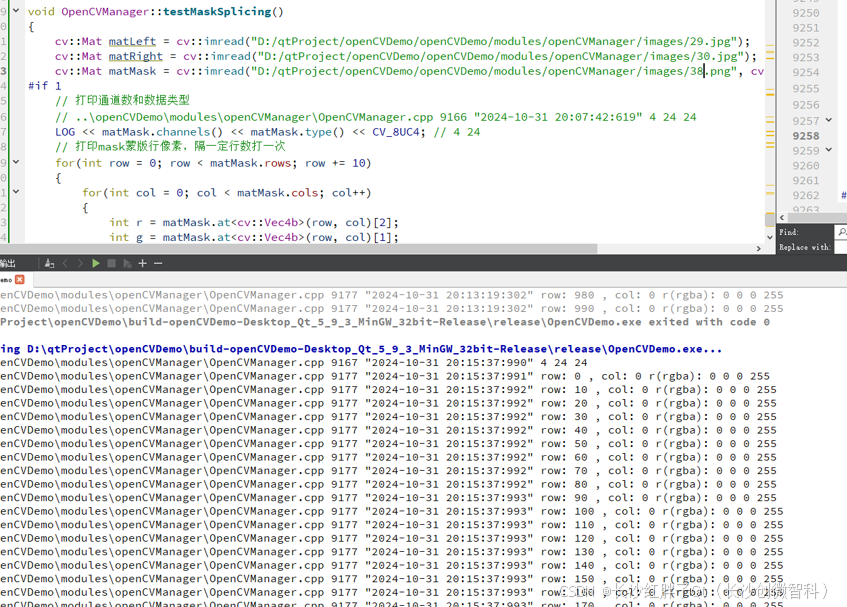
原因
弄了张图,还是255,然后发现是为了截图更清楚,弄了个边框,而我们打印正好是打印了0位置。
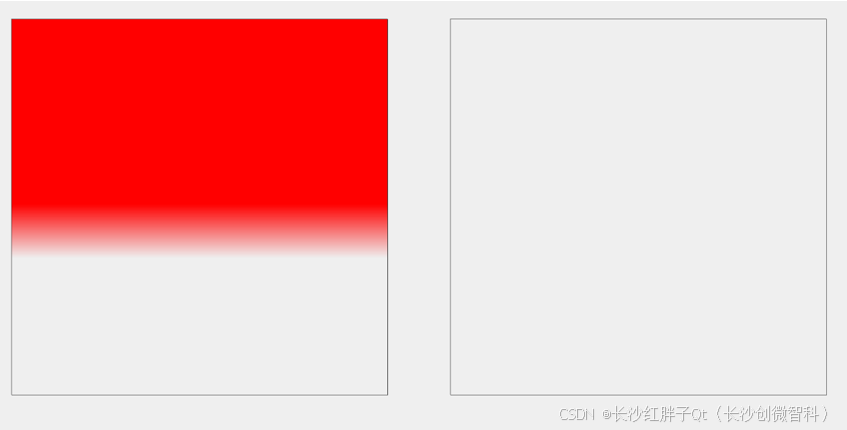
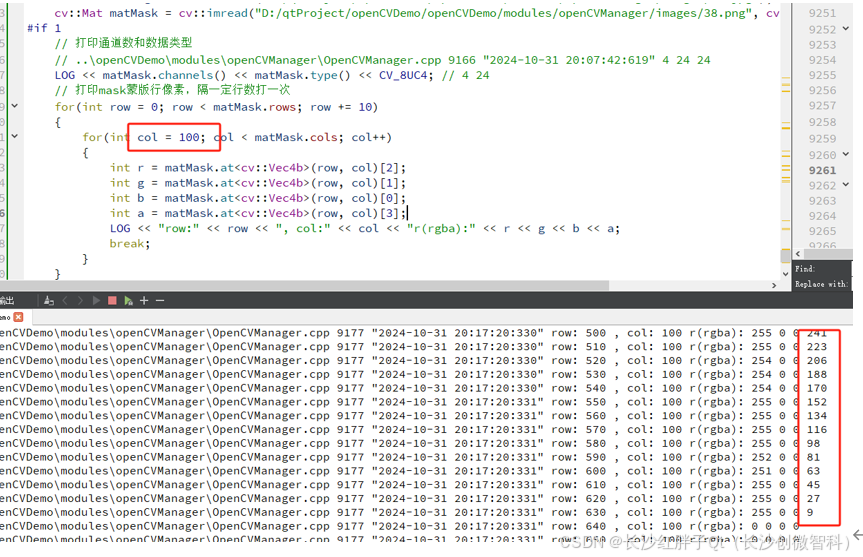
解决
最终是要去掉边框,没边框就是空看不出,如下图:
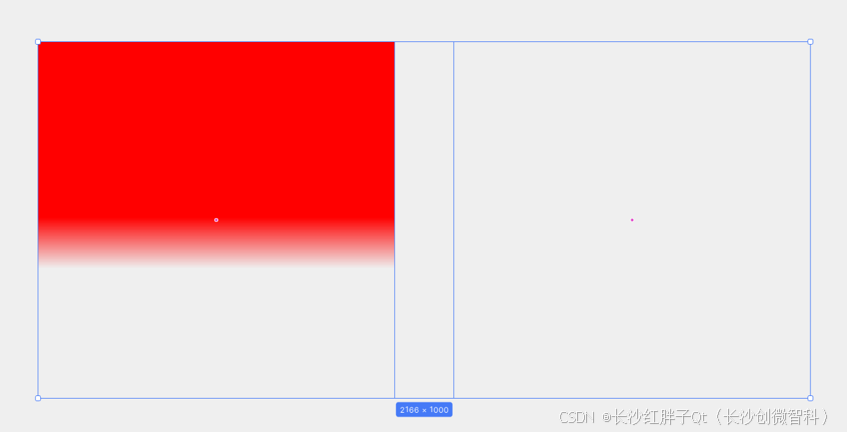
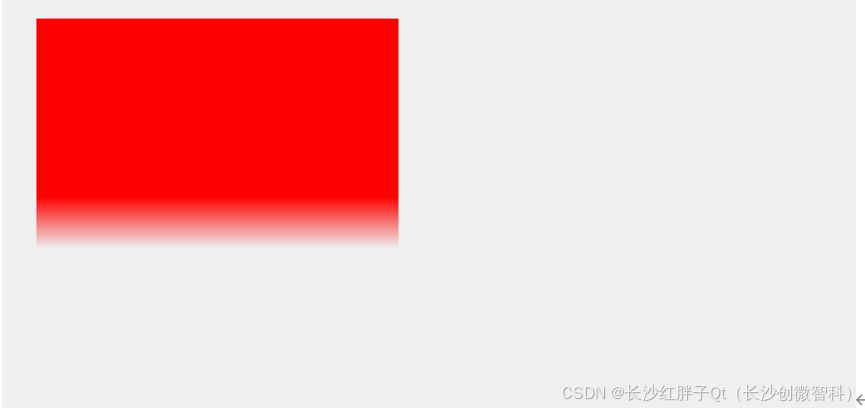
入坑三:过渡有黑线赋值不对
问题
直接位置赋值,出现条纹
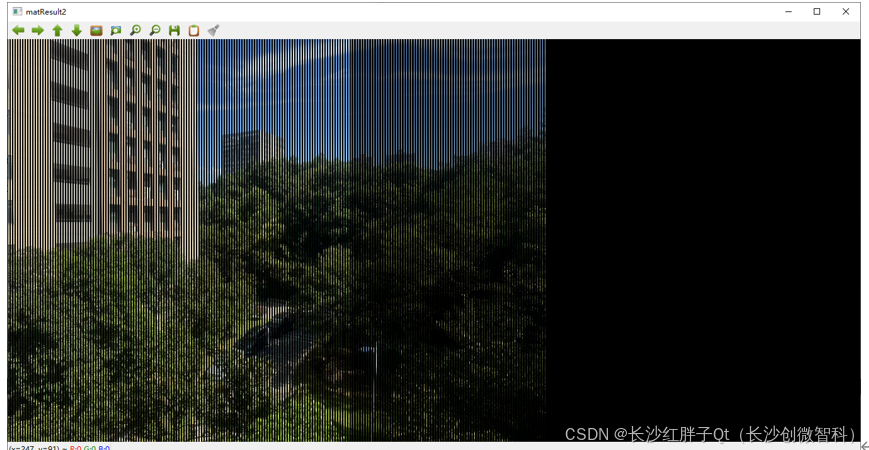

原因
类型是vec4b
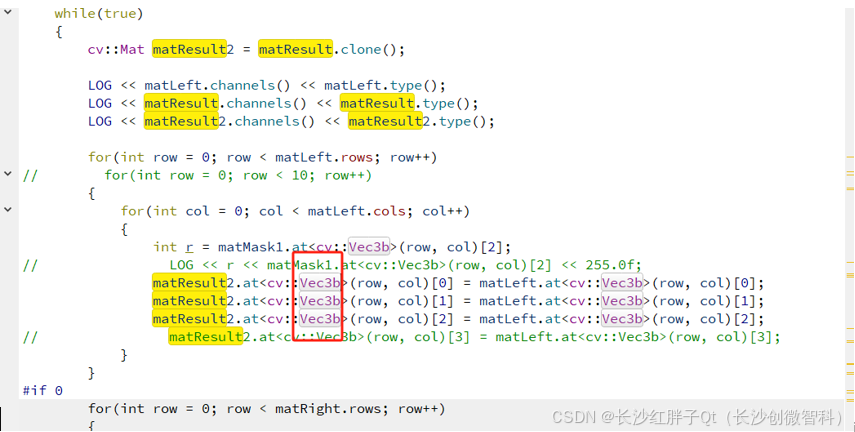
解决
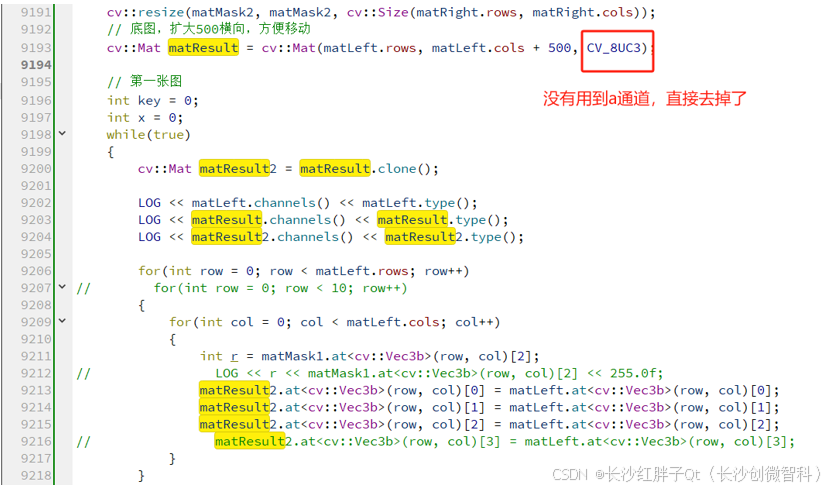
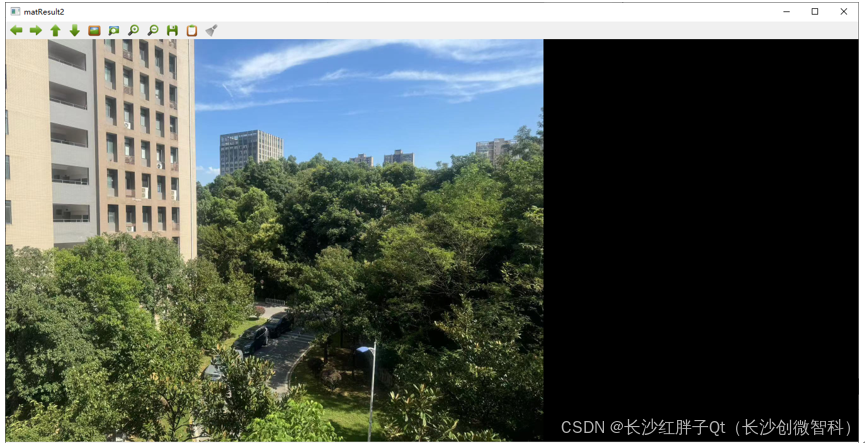
入坑四:原图融合比例有黑线
问题
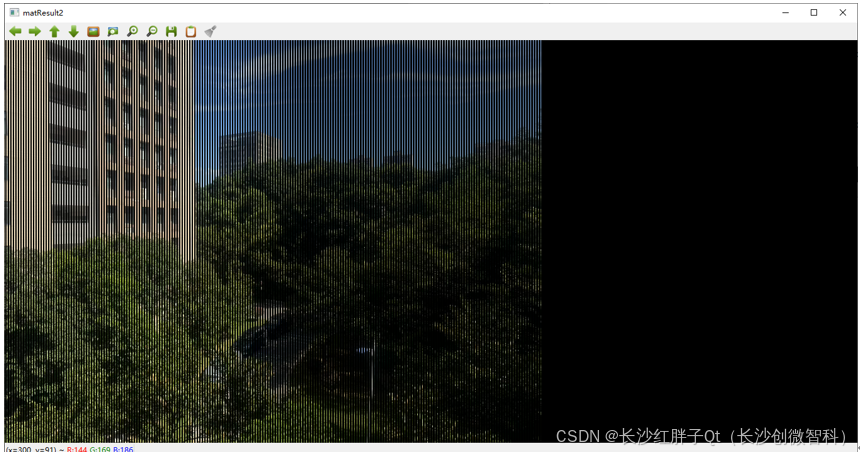
原因
跟上面一样,mask蒙版是rgba的,需要vec4b

解决

